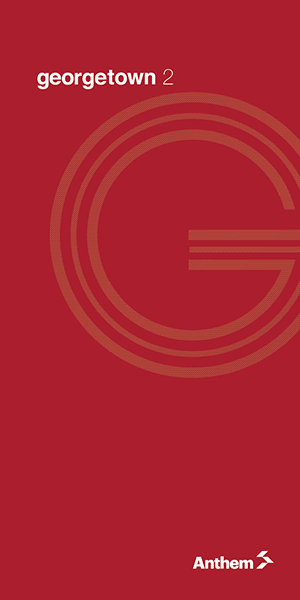
Photo courtesy CBC
BY RATTAN MALL
THE RCMP are still seeking any assistance from members of the public, especially the members of the Sikh community, who may have information that will advance the Air India investigation, RCMP Staff-Sgt. Annie Linteau, Senior Media Relations Officer, “E” Division Communication, told The VOICE on Thursday.
The bombing of Air India Flight 182 on June 23, 1985, off the coast of Ireland killed 329 people, and the Narita airport explosion in the luggage meant for another Air India plane in Japan on the same day killed two baggage handlers.
Linteau said that the investigation is ongoing and currently under the E-Division Integrated National Security Enforcement Team.

Photo by Chandra Bodalia
“RCMP members continue to meet and engage with the victims’ family members. The RCMP will be attending Air India Memorials this week including those in Vancouver, Toronto and Ottawa,” she added.
Last year, Staff-Sgt. Rob Vermeulen, Senior Media Relations Officer, BC RCMP Communication Services, told me: “The Air India investigation is the longest and certainly one of the most complex domestic terrorism investigations that the RCMP has undertaken. The RCMP continues to investigate with the objective of pursuing charges of any individuals involved in the bombings.”
He added: “This investigation is a national priority for the RCMP.”

Photo by Indira Prahst
INDERJIT Singh Reyat was sentenced to 10 years in jail in 1991 for the manslaughter of two baggage handlers at Narita Airport and in 2003 he pled guilty to manslaughter in the bombing of Air India Flight 182. In January 2011, he was sentenced to nine years in jail for telling lies under oath in 2003 in the Air India trial. His testimony was part of a deal in which he pled guilty to the manslaughter charge.
In his 2003 testimony at the Air India trial, Reyat said that Talwinder Singh Parmar (who is considered the mastermind of the Air India bombing plot and who was apparently murdered by Indian police in Punjab before he could be charged by the RCMP) asked him to make an explosive device in 1984 and that he agreed because he was very upset at the way the Indian government had treated Sikhs. He said he bought material for the device and claimed that Parmar did not tell him what it would be used for.
In 2005, Ripudaman Singh Malik of Vancouver and Ajaib Singh Bagri of Kamloops were acquitted in the Air India bombings.
But in July 2012, B.C. Supreme Court Justice Ian Bruce Josephson, who also presided over the Air India bombing trial, ruled that “the acquittal of the applicant was just that; it was not a declaration of innocence” when Malik asked for reimbursement of more than $9.2 million for his legal fees in the Air India bombing trial. The judge added: “The media and public are free to read the judgment and come to their own conclusions.”
A source who was heavily involved in the court case told me a few years ago that the RCMP could still come up with new evidence that could result in charges as some co-conspirator could always have a change of heart and agree to cooperate with police.
In fact, back in 2011, Robert Matas of The Globe and Mail newspaper told me that then-RCMP deputy commissioner Gary Bass, who was about to retire, mentioned an interesting angle to him that the RCMP were working on: “People who were afraid to speak over the period of years are in a different situation where the people they are afraid of die off, and it’s a bit of the police going around collecting deathbed repentance or deathbed statements to some extent … waiting for one person to die off and then another person will talk about it.”
There were also differences between Canadian and Indian police, who apparently had their own agenda.
For example, Bass also told Matas that although Canadian police at first accepted the conclusion of an inquiry in India that Parmar had been killed in a shootout, they later found out that he had been captured and tortured. It was only in 1997 that the RCMP discovered that Parmar allegedly made a confession, but Bass told Matas that the confession, which was made after torture, was unreliable.
Bass also revealed that India did not attach much importance to Parmar’s statements and told Matas: “India had put Air India behind them, that essentially was what we were told.”
Bass also said that Parmar identified Lakhbir Singh Brar, who had been a refugee in Canada and was later deported, as a central figure in the plot and that he was involved in the test blasts with Inderjit Singh Reyat. But Canadian investigators concluded that Brar was not involved in the bombings.
Matas reported at the time that while Indian police said that Lal Singh, the person in whose name one of the plane tickets had been booked in Vancouver, admitted his complicity in the bombing, Bass was less certain about Lal Singh, saying that although he had been interviewed many times over the years, Canadian police did not reach any definite conclusion.
Interestingly, Bass did not change his views about who the guilty are, telling Matas that the not-guilty verdict was “a very subjective analysis of credibility of witnesses.”
Bass told Matas that there are a bunch of things in the investigation that are “not known, but are knowable” – police do not know who checked in the luggage or to whom Reyat handed the bomb parts.
Bass said there were other things that were also being investigated, but did not mention them.














